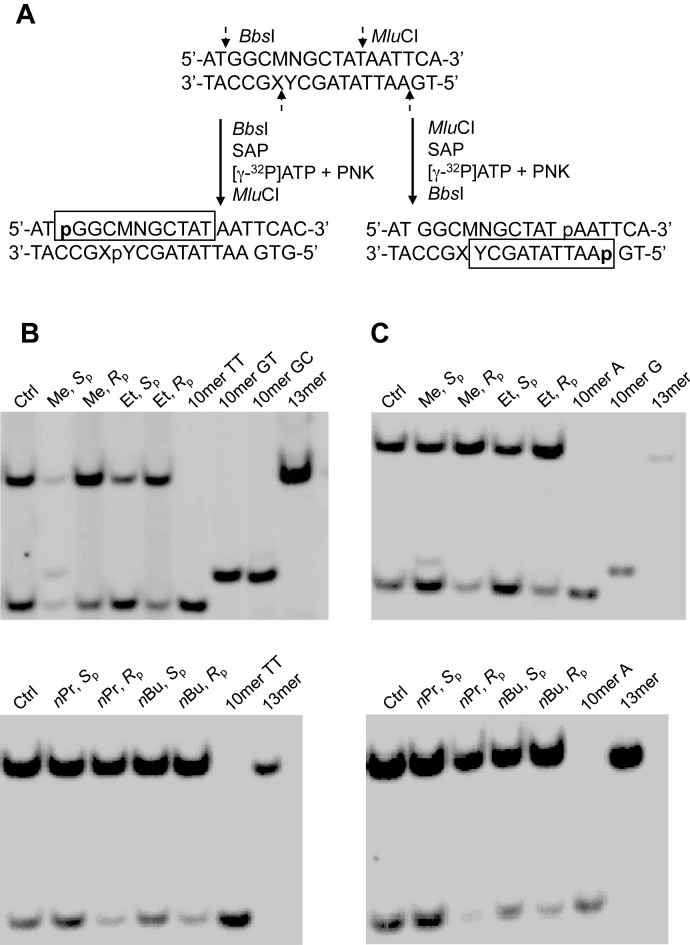Figure 2.
Restriction enzyme digestion and radiolabeling, followed by native PAGE (30%) analysis for quantifying the bypass efficiencies and mutation frequencies of alkyl phosphotriester lesions in wild-type AB1157 E. coli cells. (A) Selective labeling of the original lesion-containing strand and its complementary strand via sequential restriction digestion. ‘SAP’ and ‘PNK’ represent shrimp alkaline phosphatase and T4 polynucleotide kinase, respectively. ‘MN’ in the sequence denotes the site where the TT dinucleotide flanking the alkyl phosphotriester lesions were initially situated. (B) Gel image showing the 13 mer (competitor genome) and 10 mer (control or lesion-containing genome) digestion products formed from the original strand, where 10 mer TT, 10 mer GC and 10 mer GT designate [5′-32P]-labeled standard ODNs 5′-GGCMNGCTAT-3′, with MN being TT, GC and GT, respectively. (C) Gel image showing 13 mer (competitor genome) and 10 mer (control or lesion-containing genome) digestion products formed from the opposite strand, where 10 mer A and 10 mer G designate the [5′-32P]-labeled standard ODNs 5′-AATTATAGCY-3′, with Y being A and G, respectively.

